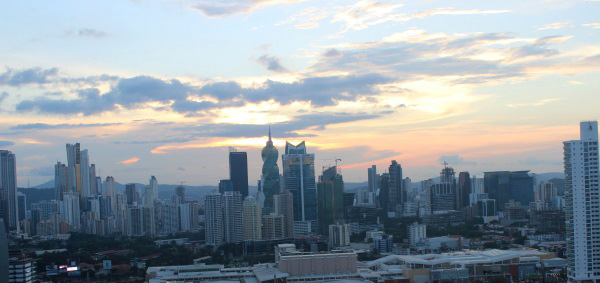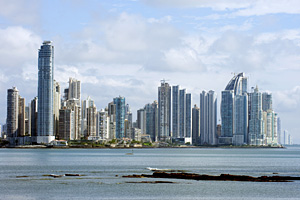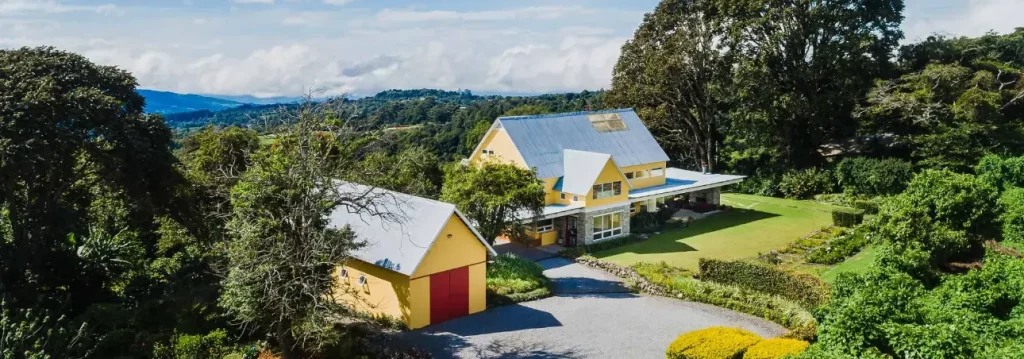Moneyweek loves Panama.
We can expect these kinds of investor raves about the country to keep coming.

One of the main features of the article is mining. Just one new major mine in Panama is expected to add a $6.4 billion investment to the Panama economy. That’s comparable to the amount being invested in the enormous expansion of the Panama Canal. However, the big difference is that this mining project is funded primarily by foreign direct investment. The author cites the diversification benefits mining will bring to the country adding as much as 10% to annual GDP. That’s a huge forward push on the national economy.
(And the other one no seems to be talking about much is oil exploration. The potential is unclear, but keep an eye out for that one which may come later.)
Mining has hit some headwinds in Panama and has its drawbacks. The Cobre mine that the author is referring to has had some labor-related delays as the workers seek to either increase their wages and benefits or argue for better conditions. Expect the Cobre project to forge ahead regardless though there may be intermittent interruptions and further delays.
Such issues also hit the Panama Canal and seem to be a part of the cost of huge infrastructure projects in Panama. Some smaller mining companies have had issues with the government lately over pay for workers. And in the past, another enormous copper mine was postponed indefinitely due to intense opposition partially from concerned environmentalists, but primarily from the Ngäbe-Buglé indigenous people whose territory would have been impacted from the massive project. Open pit mining inevitably does some or a lot of environmental damage depending on how it is handled and who you ask about it. Panama is deeply rich in its natural wonders including unparalleled diversity in rainforest plants and animal life. Those resources will become even more valuable as time goes on. Therefore, we should temper our enthusiasm about the economic positives with education about the potentially severe environmental costs. Regardless, mining is happening and its future contribution to economic growth is real.
Here are some of the MoneyWeek article highlights with the full article below.
“I’ve been in Panama for two weeks now and I love it.”
“Over the last ten years, the country has been transformed from a tropical backwater to one of the fastest-growing economies in the world. New buildings have sprung up to give Panama City a skyline to rival New York, while the place teems with hundreds of thousands of Colombians, Venezuelans, Gringos and Chinese that have come to work here.”
“Britain also has a big presence in Panama. Maybe not so much in terms of people, but the UK is the second biggest investor here. British firms are making big investments in real estate, telecoms and logistics. ”
“Unsurprisingly, the handover of the canal has coincided with an unprecedented economic boom in Panama. This isn’t just because Panama has been able to benefit from charging tolls on passing ships, but also because they have worked hard to offer the additional services and infrastructure needed to turn their tiny country into the business hub of Latin America. They built free trade zones and warehouses to encourage companies to use Panama as a distribution centre. As a result, more cargo is now coming off ships to be repackaged and sent off to other parts of the region. Panama has also developed Latin America’s most connected airport, and its busiest ports. Some of the continent’s best telecoms networks help to make it a hub in every sense. ”
“But the canal can’t claim sole credit for Panama’s recent successes. Another part of the country’s economic strategy has been to diversify the Panamanian economy into other sectors.”
“Indeed, over the last 20 years it has turned itself into a major financial player.”
“Panama’s banking industry has 95 local and international banks registered in the country, with assets of almost $100bn. The sector’s total assets are growing by around 10% per year as international firms come to the country.”
“Residential towers, office blocks, metro lines, sewerage systems – you name it and it’s being built in Panama.”
“Panama’s economy doubled in size between 2007 and 2013”
Mining – First Quantum on Cobre from early in the year
Investing in Panama: The view from my apartment says it all
by James McKeigue, 3/11/14
I’ve been in Panama for two weeks now and I love it.
Hot and humid, it’s the antithesis of the Andean winter I recently left behind me in Chile. Admittedly, it’s not ideal weather for traipsing around in a suit, and the congested streets could do with Chile’s transport system – Panama’s nascent metro has just one line – but there is a great buzz about the place.
Over the last ten years, the country has been transformed from a tropical backwater to one of the fastest-growing economies in the world. New buildings have sprung up to give Panama City a skyline to rival New York, while the place teems with hundreds of thousands of Colombians, Venezuelans, Gringos and Chinese that have come to work here.
Britain also has a big presence in Panama. Maybe not so much in terms of people, but the UK is the second biggest investor here. British firms are making big investments in real estate, telecoms and logistics.
There’s also a UK-listed firm that’s making a big Panama play in a completely new sector for the country. It’s involved in a transformational $6.4bn mega project that could reward both Panama and UK investors.
I’ll talk more about that later, but for now let’s look at what makes Panama’s economy tick.
The last 15 years have been great for Panama
Panama is a small country, and Panama City, for all its dynamism, is also small – home to just 1.5 million people. In fact, the place is so small that from the top of my apartment block I have a pretty good view of the main drivers of Panama’s economy.
Shipping: one of the drivers of Panama’s booming economy
If you look deep into the background, you can see a row of ships waiting for their turn to enter Panama’s famed canal.
Of course, Panama’s had the canal for a century, but it’s only recently that the country has been able to really benefit. The US only handed the Panamanians control of the canal in 1999 (which perhaps makes the US stance over Britain and the Suez a touch hypocritical).
Unsurprisingly, the handover of the canal has coincided with an unprecedented economic boom in Panama. This isn’t just because Panama has been able to benefit from charging tolls on passing ships, but also because they have worked hard to offer the additional services and infrastructure needed to turn their tiny country into the business hub of Latin America. They built free trade zones and warehouses to encourage companies to use Panama as a distribution centre. As a result, more cargo is now coming off ships to be repackaged and sent off to other parts of the region. Panama has also developed Latin America’s most connected airport, and its busiest ports. Some of the continent’s best telecoms networks help to make it a hub in every sense.
Panama has also invested heavily in the canal itself, with a $5bn expansion programme that will allow the canal to handle bigger ships. When complete in 2016 it should allow 8% of world trade to pass through the 80km-long canal. The extra volume of shipping and the many support services being developed alongside it offer great opportunities for British investors.
But the canal can’t claim sole credit for Panama’s recent successes. Another part of the country’s economic strategy has been to diversify the Panamanian economy into other sectors.
Indeed, over the last 20 years it has turned itself into a major financial player.
The financial sector is booming
If I turn away from the canal and face the west, I can see the financial district.
Panama’s banking industry has 95 local and international banks registered in the country, with assets of almost $100bn. The sector’s total assets are growing by around 10% per year as international firms come to the country.
The big draws include the dollarised economy, the lack of capital controls and a link with Euroclear, a Belgium-based financial services company, which makes it easy for international institutional investors to access Panama’s capital markets.
Of course, the one cloud for this sector is tax.
Around the world, there are various organisations that accuse Panama of being a tax haven, and the growing complaints may halt the rise of Panama’s finance sector. The Colombians recently had a spat with Panama about the issue, although they’ve now given themselves a year to look for a solution.
More ominously, the OECD’s Financial Action Task Force (FATF) has put Panama on its ‘Grey List’ of suspect countries. Given the numerous tax dodges that all sorts of OECD member countries indulge in – for example, the popularity of Delaware corporations in the US – there’s a strong whiff of hypocrisy with all this.
But regardless of the morals, the fact is that being on the list isn’t good for Panama. At the moment, it hasn’t done any harm but the fear of reputational damage or extra scrutiny may start to reduce the lustre of Panama’s financial hub for international companies.
I’ve already interviewed the head of the stock exchange out here and over the next few weeks I’ll be asking more of the main players in Panamanian finance for their take on the situation.
Next, let’s take a look at another industry: construction.
Immigration is fuelling huge growth
This photo is taken from inside my flat.
OK it’s not the nicest photo, but it gives you a good idea of the building site that is Panama City. Residential towers, office blocks, metro lines, sewerage systems – you name it and it’s being built in Panama.
Part of the reason for the building boom is the increase in immigration that I mentioned earlier. It’s difficult to get exact numbers but, to give you just one example, it’s estimated that there are 500,000 Colombians living here out of total population of four million. This is spawning new housing developments, like the one in the photo.
The city is literally changing before residents’ eyes. Taxi drivers tell me the change is a constant challenge. Panamanians aren’t big on road names and numbers, and directions tend to be based on landmarks rather than a specific address. That system worked fine in the old days, they say, but now it’s a real struggle as new houses and offices pop up around the city.
But it’s not just about more people. Panama’s economy doubled in size between 2007 and 2013, which has allowed the government to fund some ambitious infrastructure programmes. Perhaps the best example of this is the metro, which saw the first line completed recently. At the moment, it isn’t too much use as it just has one line, but lines 2 and 3 are in the process of being added. Imagine London suddenly going from having no underground system to getting three lines. Like I say, it’s a country undergoing complete transformation.
Of course, this hasn’t been all without problem. Locals complain that corrupt government officials have taken payment to allow developers to build what and where they liked. Meanwhile the rampant growth has put pressure on energy and water infrastructure. Nonetheless, the feeling of optimism and progress here is tangible.
And it’s leading to some big opportunities like the one I have for you today.
What I can’t see from my apartment – Panama’s newest sector
At a conference the other day, I learned that in the future Panama’s next biggest sector could be mining.
The country has massive copper and gold deposits that have never really been exploited. There has been some mining since the 1990s, but nothing on a significant scale.
However, now London-listed First Quantum (LON:FQM) is developing a $6.4bn copper mine in the country. If this goes ahead, it would provide about 10% of the country’s GDP and help mining rival the canal in terms of importance.
From a purely economic point of view, the project makes a lot of sense. Panama already has a quite diversified economy (no one sector accounts for more than 25% of GDP) but adding mining to its portfolio would help it diversify further.
Moreover, the mine would benefit from being at the heart of a distribution hub that could take its produce straight to China.
I’m hoping to arrange an interview with the firm out here in Panama, so I’ll let you know more about this potentially game-changing project when I do.
Mr. McKeiguealso wrote these intriguing articles




